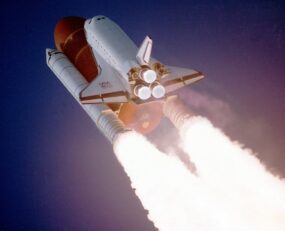
By 2040, the space economy is predicted to become the next 1 trillion USD market.Thus, the sky-rocketing demand for space-based services, such as satellite communications, Earth observation, and scientific research, is driving the growth of the space industry. Likewise, the shifting landscape of space commercialisation highlights the need for reliable and cost-effective space logistics services.
As a significant number of satellite constellations are launched, plans for space hotels are announced, and dreams of Mars colonisation draw closer to reality, this niche market is poised to become a sizeable sector within the logistics industry, as it also becomes more common for space-bound products to pass through supply chains.
The expansion of space activities, like space tourism, mining, and manufacturing, will create new demand for space logistics services and create new opportunities for the development of commercial space logistics services, as businesses and customers look to capitalise on a new growing market with significant potential for future growth and development.
However, according to DHL, at the moment it costs a staggering US$6k per pound of cargo just to reach low Earth orbit. The cost drops if you’re transporting both up mass and down mass, when cargo comes back to Earth as well as up into space.
Although, advances in rocket technology are set to mitigate such challenges. Reusable spacecraft, in-orbit servicing and assembly, and autonomous systems, are enabling the development of new and more efficient space logistics services, as they play a critical role in reducing the cost of space transportation and making it more accessible to a wider market. In addition, the use of autonomous systems, such as drones and robots, will offset safety and efficiency concerns during the delivery of supplies and equipment to remote locations.
While currently it is an industry niche, the commercial space logistics market is expected to become more competitive as new players enter the market and established players expand their capabilities. This will drive innovation and lower costs eventually, as evidenced by the current up-tick in the smallsat market, with increasing numbers of small, low-cost satellites being launched.
An interesting segment to observe currently is in-orbit servicing and assembly, as the technology for satellite repair and upgrades advances, and satellite companies look to increase the operational lifetime of satellites to reduce the need for costly replacements.
The expansion of space commercialisation will not go anywhere, without one major element: a supply chain in space. Previously, the challenge was global logistics. Now, the major new trend for the next 30 years and beyond is galactic logistics, making for a wind-fall new age space-race.